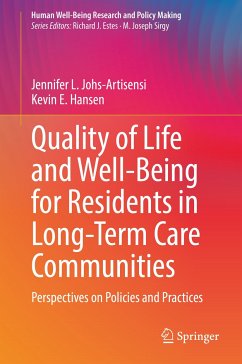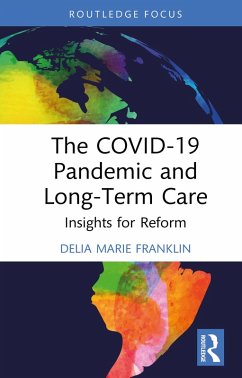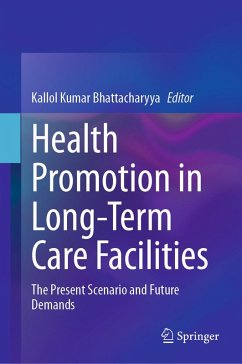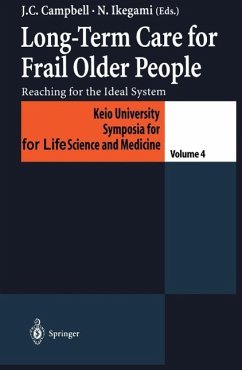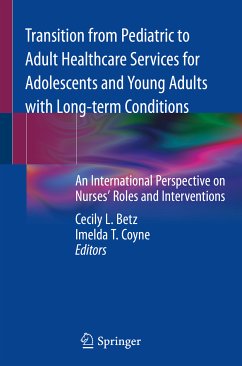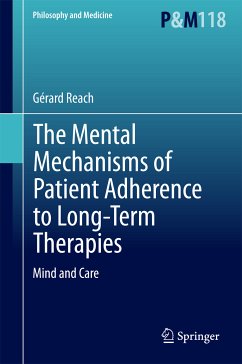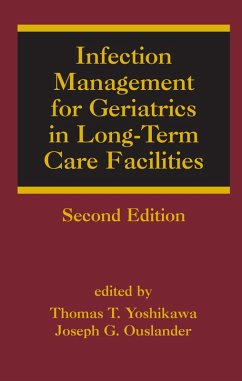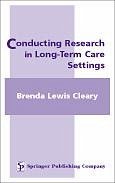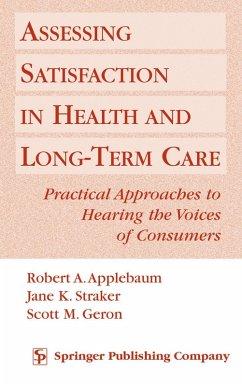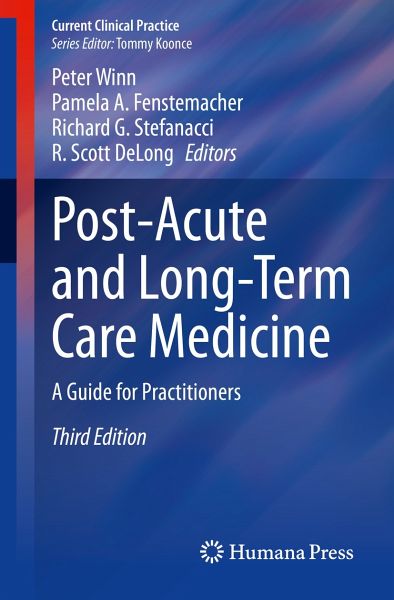
Post-Acute and Long-Term Care Medicine (eBook, PDF)
A Guide for Practitioners
Redaktion: Winn, Peter; DeLong, R. Scott; Stefanacci, Richard G.; Fenstemacher, Pamela A.
Versandkostenfrei!
Sofort per Download lieferbar
80,95 €
inkl. MwSt.
Weitere Ausgaben:

PAYBACK Punkte
40 °P sammeln!
This book addresses current issues surrounding hospital admissions and readmissions and the practice of post-acute and long-term care (LTC). Now in its fully revised and expanded third edition, it contains the most up-to-date knowledge and regulations pertinent to practice in Post-Acute and Long-Term Care Medicine.Post-Acute and Long-Term Medicine is divided into four main sections. The first section is an introduction to long-term care. It includes chapters on home health care, assisted living and residential care, department of veteran affairs and nursing facilities, among others. The second...
This book addresses current issues surrounding hospital admissions and readmissions and the practice of post-acute and long-term care (LTC). Now in its fully revised and expanded third edition, it contains the most up-to-date knowledge and regulations pertinent to practice in Post-Acute and Long-Term Care Medicine.
Post-Acute and Long-Term Medicine is divided into four main sections. The first section is an introduction to long-term care. It includes chapters on home health care, assisted living and residential care, department of veteran affairs and nursing facilities, among others. The second section focuses on clinical medicine in post-acute and long-term care and contains chapters on common clinical conditions, preventing hospital admissions and readmissions, palliative care, weight and nutrition and wound care. The third section details psychosocial aspects of post-acute and long-term care. Chapters in this section describe dementia, delirium, depression, ethical and legal issues and caring for families. The fourth and final section centers on special issues in post-acute and long-term care. This section focuses on documentation and coding, medication management and rehabilitation and maximizing function. The outbreak of COVID-19 has led to two very important new chapters in this section. One chapter discusses challenges and opportunities in post-acute long-term care that have arisen during the pandemic. Another new chapter talks about the importance of virtual care and telemedicine in post-acute and long-term care amidst the COVID-19 outbreak.
Written by experts in the field, many of whom have worked within AMDA - The Society for Post-acute and Long-term Care Medicine - to create and disseminate a knowledge base for post-acute and LTC, this is a valuable resource for clinicians and educators seeking to maximize the care and living experience of residents in post-acute and long-term care settings.
Post-Acute and Long-Term Medicine is divided into four main sections. The first section is an introduction to long-term care. It includes chapters on home health care, assisted living and residential care, department of veteran affairs and nursing facilities, among others. The second section focuses on clinical medicine in post-acute and long-term care and contains chapters on common clinical conditions, preventing hospital admissions and readmissions, palliative care, weight and nutrition and wound care. The third section details psychosocial aspects of post-acute and long-term care. Chapters in this section describe dementia, delirium, depression, ethical and legal issues and caring for families. The fourth and final section centers on special issues in post-acute and long-term care. This section focuses on documentation and coding, medication management and rehabilitation and maximizing function. The outbreak of COVID-19 has led to two very important new chapters in this section. One chapter discusses challenges and opportunities in post-acute long-term care that have arisen during the pandemic. Another new chapter talks about the importance of virtual care and telemedicine in post-acute and long-term care amidst the COVID-19 outbreak.
Written by experts in the field, many of whom have worked within AMDA - The Society for Post-acute and Long-term Care Medicine - to create and disseminate a knowledge base for post-acute and LTC, this is a valuable resource for clinicians and educators seeking to maximize the care and living experience of residents in post-acute and long-term care settings.
Dieser Download kann aus rechtlichen Gründen nur mit Rechnungsadresse in A, B, BG, CY, CZ, D, DK, EW, E, FIN, F, GR, HR, H, IRL, I, LT, L, LR, M, NL, PL, P, R, S, SLO, SK ausgeliefert werden.



